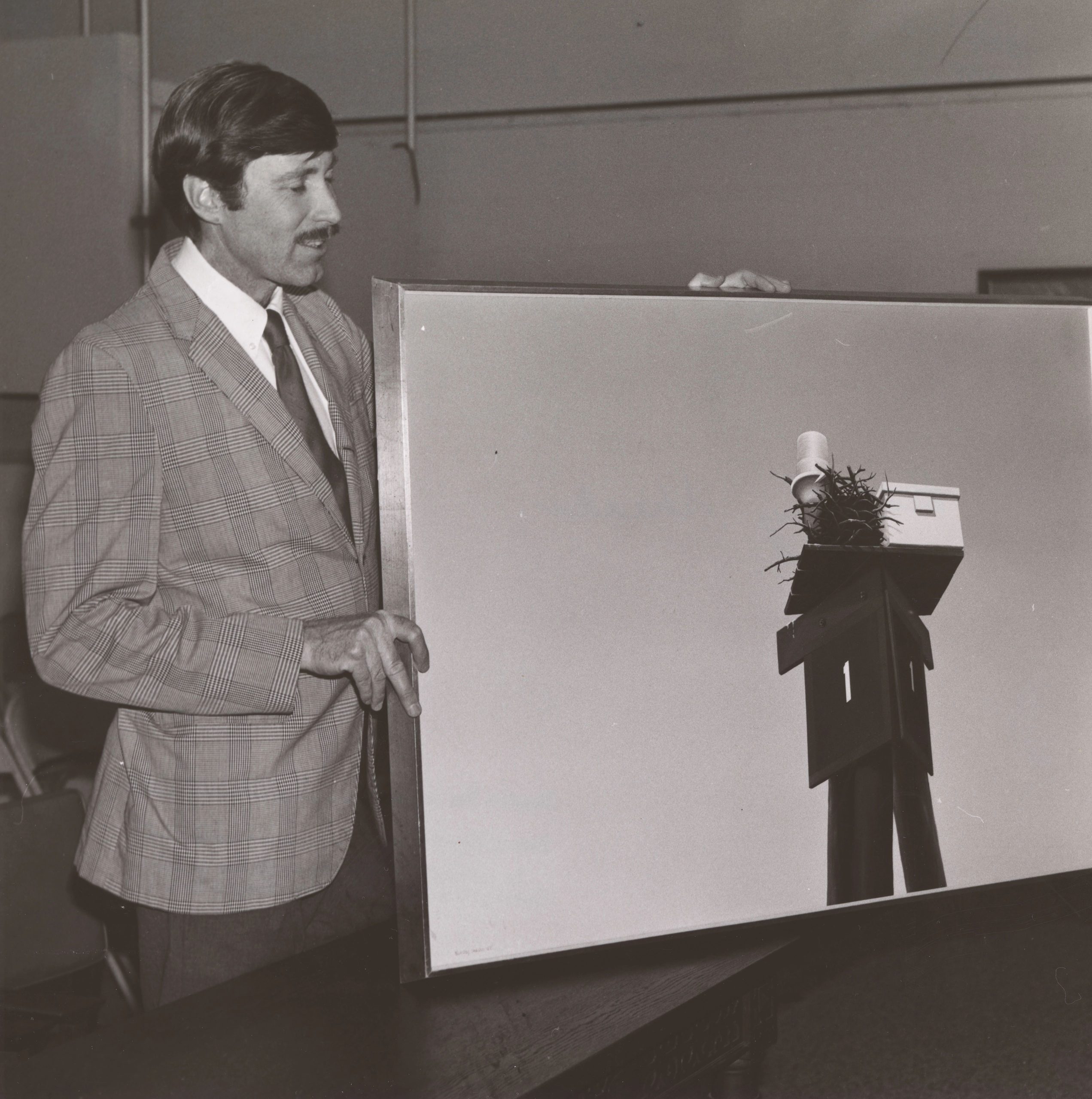In nature, nothing exists alone.
— Rachel Carson, Silent Spring (1962)
Those who enjoy the company of nature know that being “alone” is not necessarily lonely and that solitude is far from isolation. Because, even in the stillness of nature you can close your eyes and hear the hum of the earth as it moves around you. The rustle of wind in trees, the ripple and drop of water, the drone of insects, and the calls of creatures.
Their existence adds to the delicate symphony of nature.
Setting the Scene
You sit in a kayak, drifting in the water listening to the sounds around you. You look up into the gradient of the hazy blue sky. Two large wooden pilings stretch upwards, towering over you.
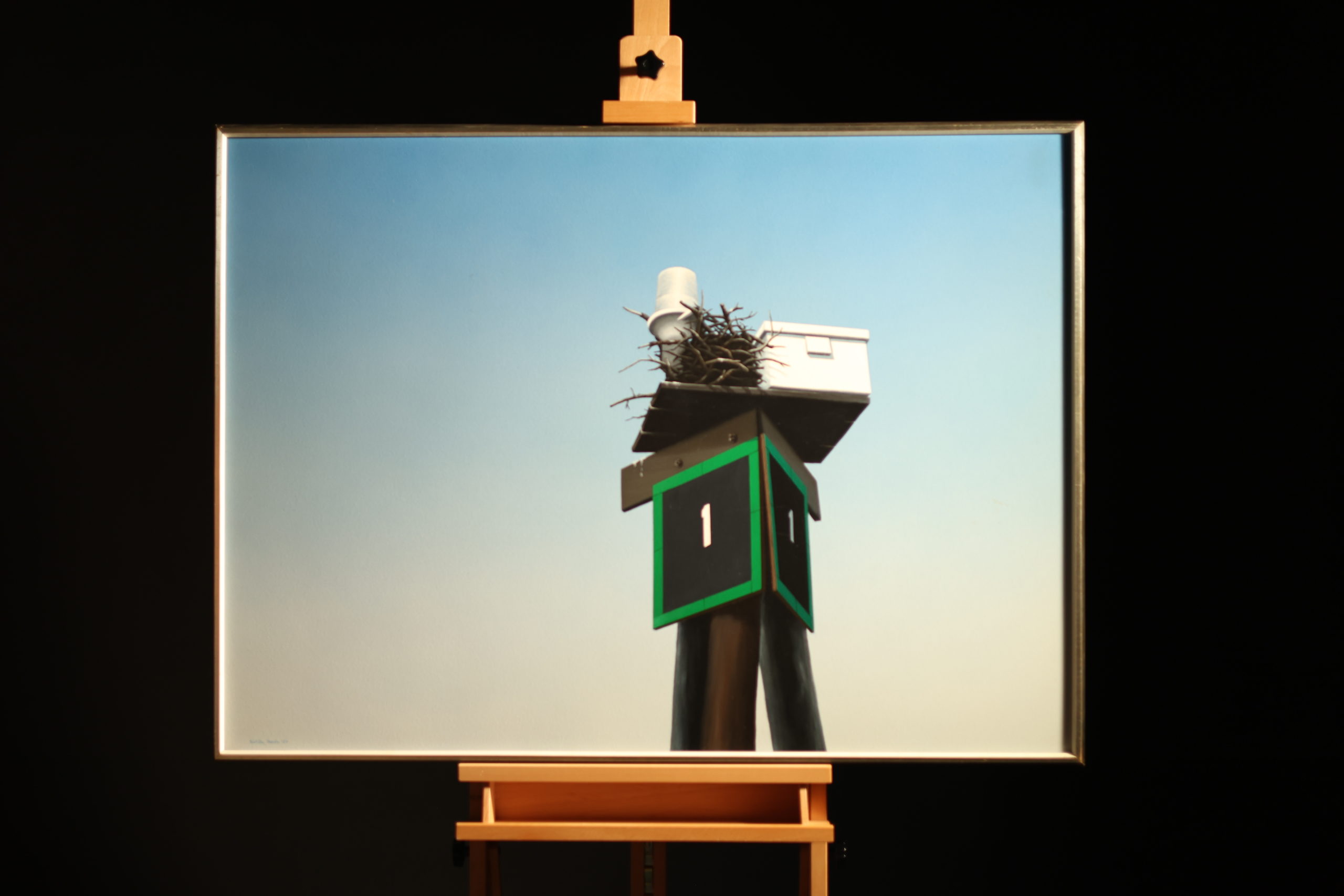
You note that at the top there’s a beacon and a small white box and this structure is emblazoned with a green plaque. This is Chesapeake Bay Channel Marker 1. But there’s something else nestled into this man made structure – an Osprey nest.
The Osprey has made its home atop this platform – above the water with a perfect view for fishing and away from predators. As you squint upwards you can see there are signs of life, but only barely.
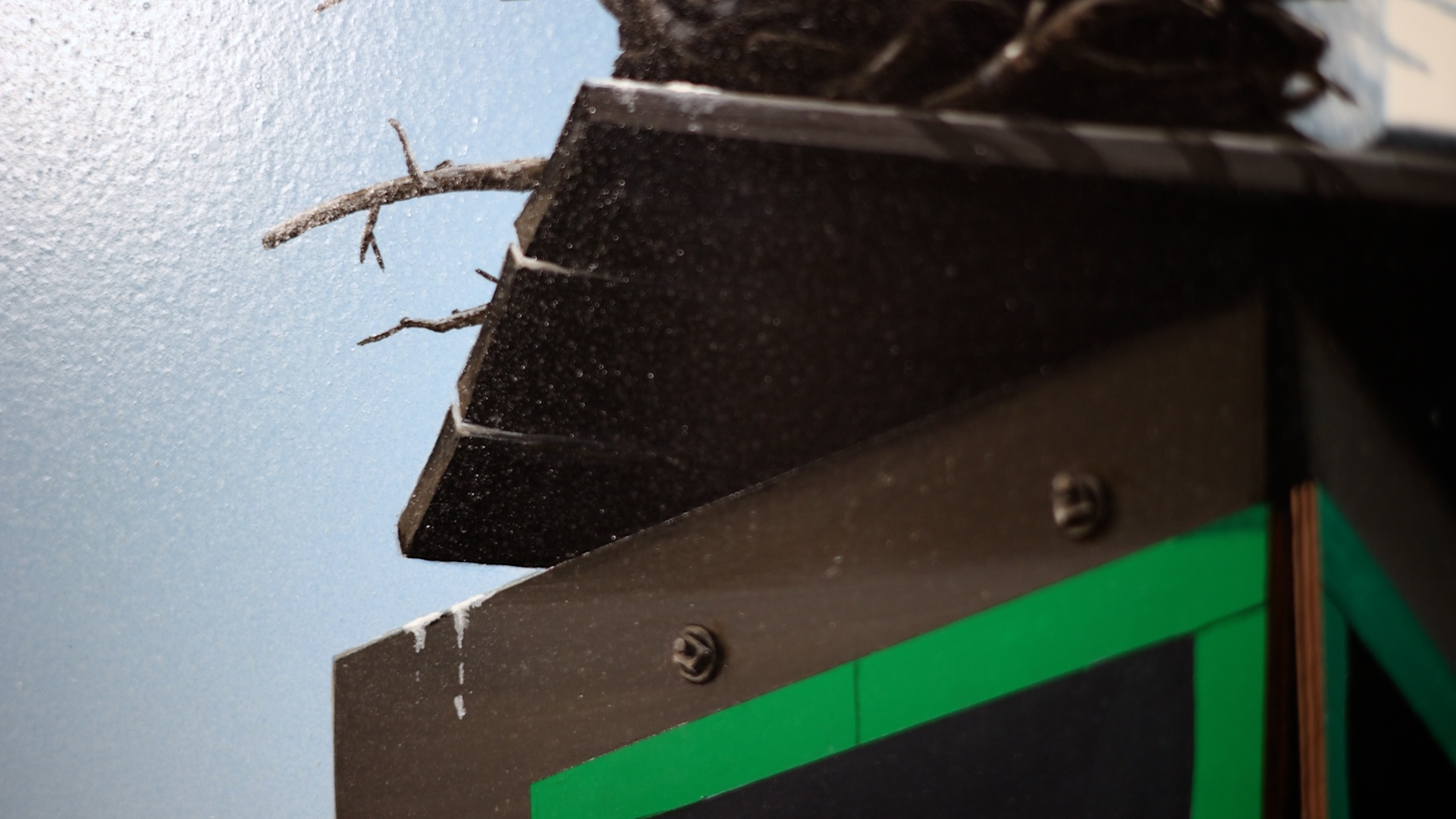
Seeking the Truth
This heaviness stuck with me and I had to explore that deeper. I spoke with experts in the field and learned that 1969, the year that this work was painted, was perhaps the lowest point of the Osprey population ever. Over the 25 years prior, the toxic pesticide, DDT, was widely used both in-home and commercially.
It ran off into the waterways, working its way up through the food chain, before being ingested by the osprey whose diets are almost entirely fish. The result was eggs laid with shells so thin that they would break before the chicks could ever hatch and see the beauty of the Bay.
The Multi-faceted Artist
Barclay Sheaks was many things – artist, teacher, local celebrity – and an outdoorsman. Many of his works reflect the natural beauty of the Chesapeake Bay through the eyes of someone who has hummed along to that symphony of the earth. Someone who would pull over to the side of the road to take a picture of dew drops on grass that caught the light just right.
So is this just a coincidence? A painting of an empty osprey nest painted by a nature loving artist who lived on the Bay and at a time to perfectly coincide with this massive loss of life. I don’t think so.
Looking Deeper
The title of this work, “Marine Totem with Osprey Nest”, carries a reverence. The idea of a totem invokes a spirituality, rooted in the indigenous belief of humankind’s kinship with nature. More secularly, this concept describes something that acts as a respected symbol.
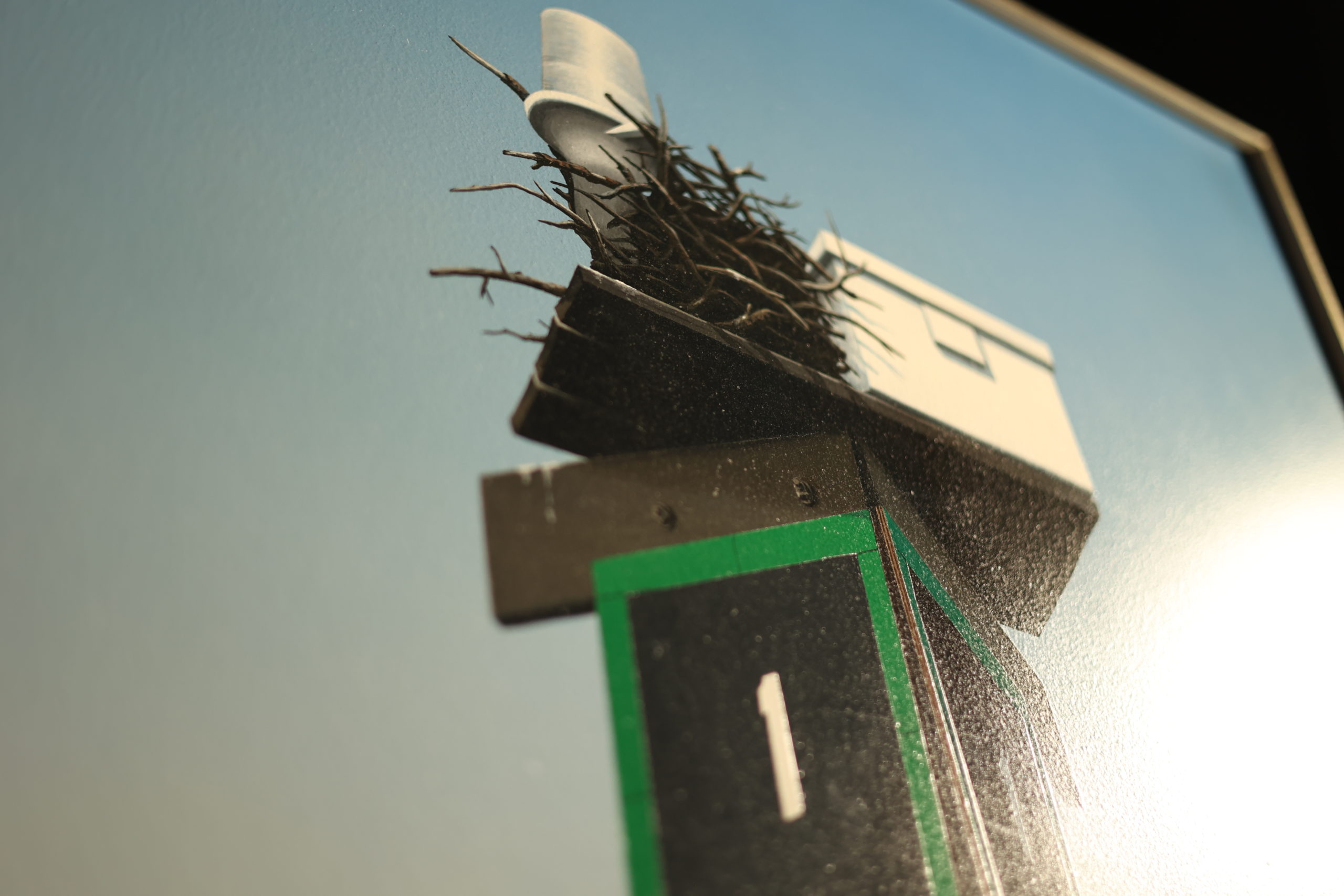
Because of this, the title actually adds a level of question and complexity to this work. One could make the point that the artist is referring to the channel marker as the totem and the nest as a sort of aside. But I believe he is describing them as one unit – marker and nest joined as a totem of the interconnectedness of man and nature.
A symbol of our relationship with these birds in our own community on the bay. But further – a symbol of our innate, spiritual kinship with the earth – a dance of give and take. Perhaps this work is also an uncomfortable nudge to suggest that this dance has fallen out of step – more take than give. The effects of this beginning to show – and what will be next?
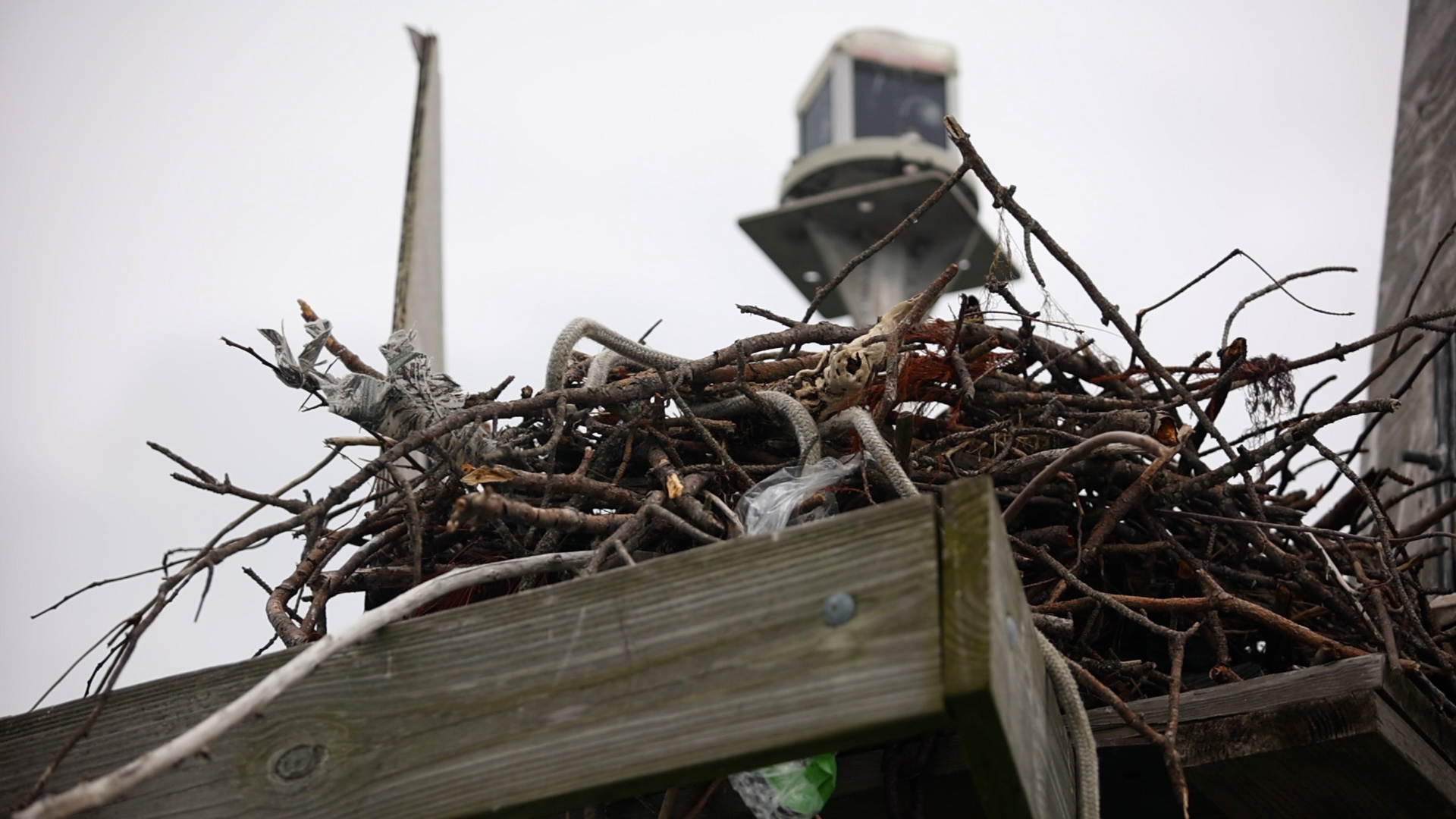
A Call to Action
In 1972, three years after this work was painted, DDT was banned and with the constant efforts of many, the osprey population began to make a resurgence, one that is still fragile today because of the continued impact of humans on their habitat.
The elements that Sheaks used in this work carry a solemnity and the composition reflects this intersection of man and nature – the nest built between the beacon and box is a very literal representation of this.
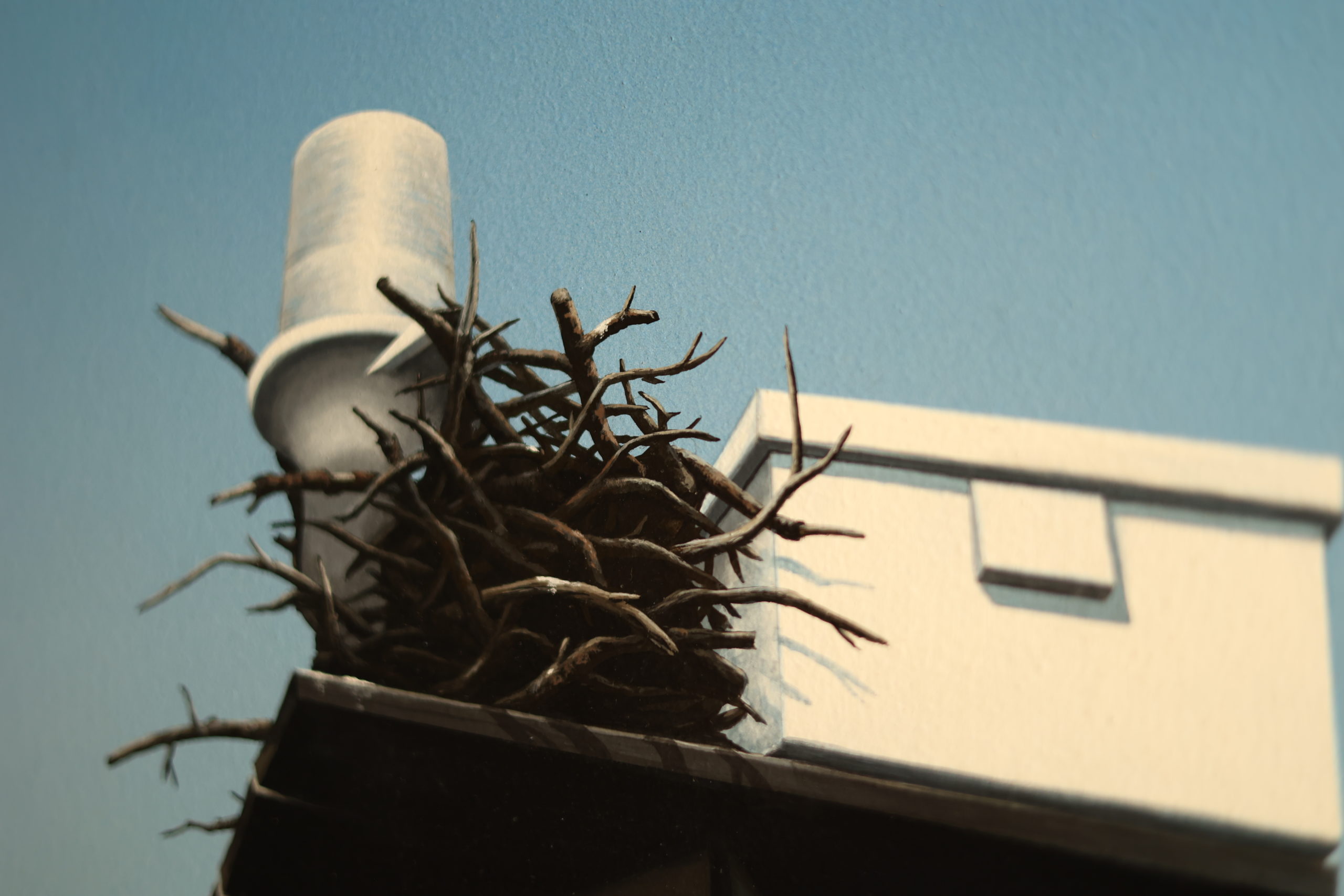
But he’s also placed us in this scene through his use of perspective, in a kayak at the base of this marker and said “look, do you see what I see?” And it’s important, there’s not even a cloud in the sky to distract us from the subject, he wants us to look deeper, feel what he feels. As we get close to this work, we can’t see a single brushstroke, as if it’s free from human touch. But we know, as well as the artist, that neither the work nor the subject matter were without the interaction of humans.
Singularity
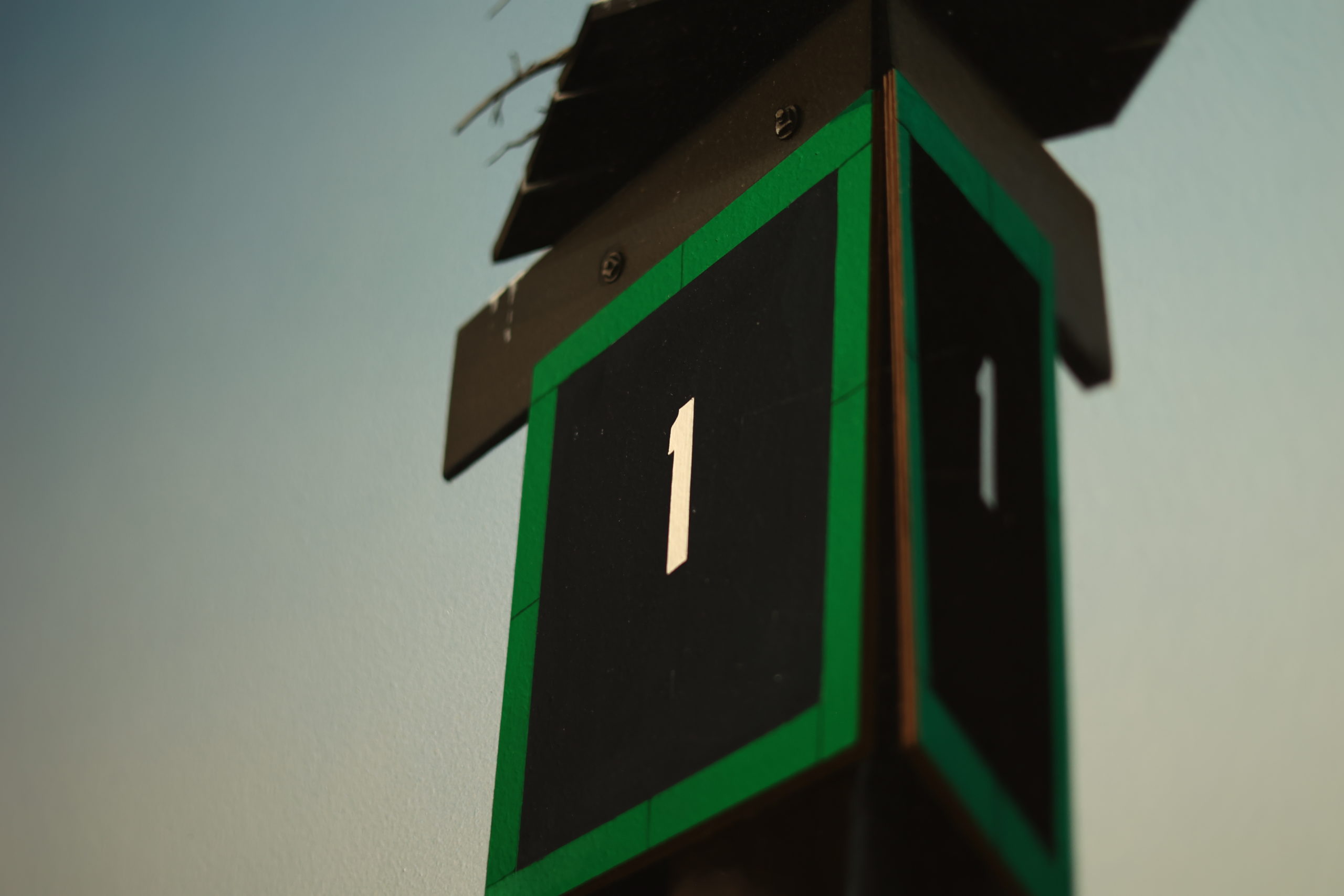
By presenting the marker alone in an unobscured sky, we get a feeling of singularity like we are alone with this subject, this isolation echoed in the accurate but symbolic “1” on the plaque. But we are not alone – we are one. Humans and nature joined together through this inherent totemic bond. We might not always feel or see it but that symphony of life says “you have a part to play”.
We are part of the same community, the same ecosystem, and we depend on one another. And I find that powerfully challenging and beautifully hopeful.
A Reflection of Our World
Art can serve as a reflection of what is happening in the world and I believe this is Barclay Sheaks’ way of recognizing this and saying “something needs to be done.” And he has immortalized it on canvas, not only for his generation, but for us, and for those in the future.
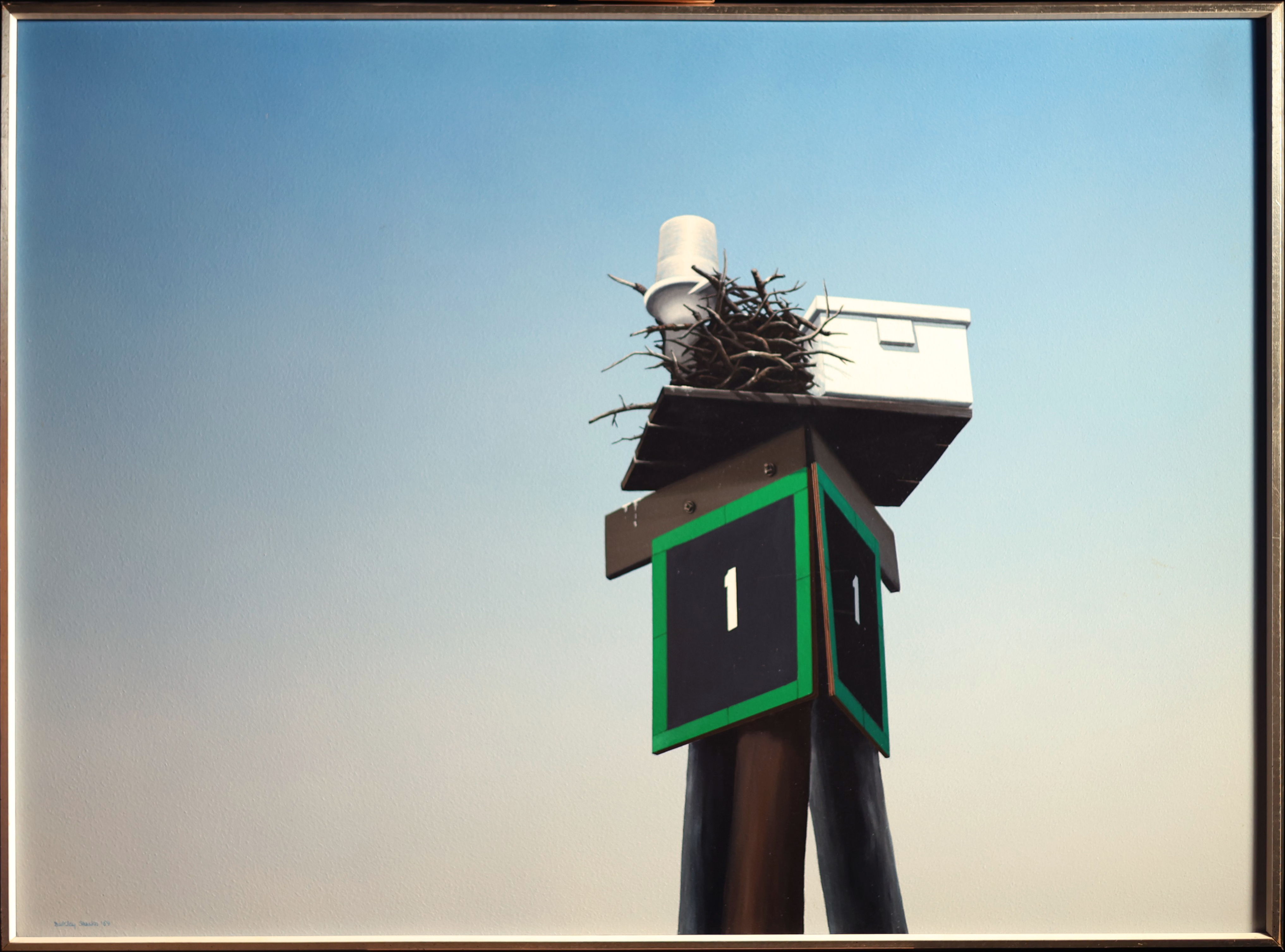
In its subtlety, it implores us to make a change so that there can be hope. And that hope is reflected in this work too- it’s not dark and ominous. The sky fades from a hazy gray to a vibrant blue and the sun brilliantly shines on this totem as if to say that this is not the end.
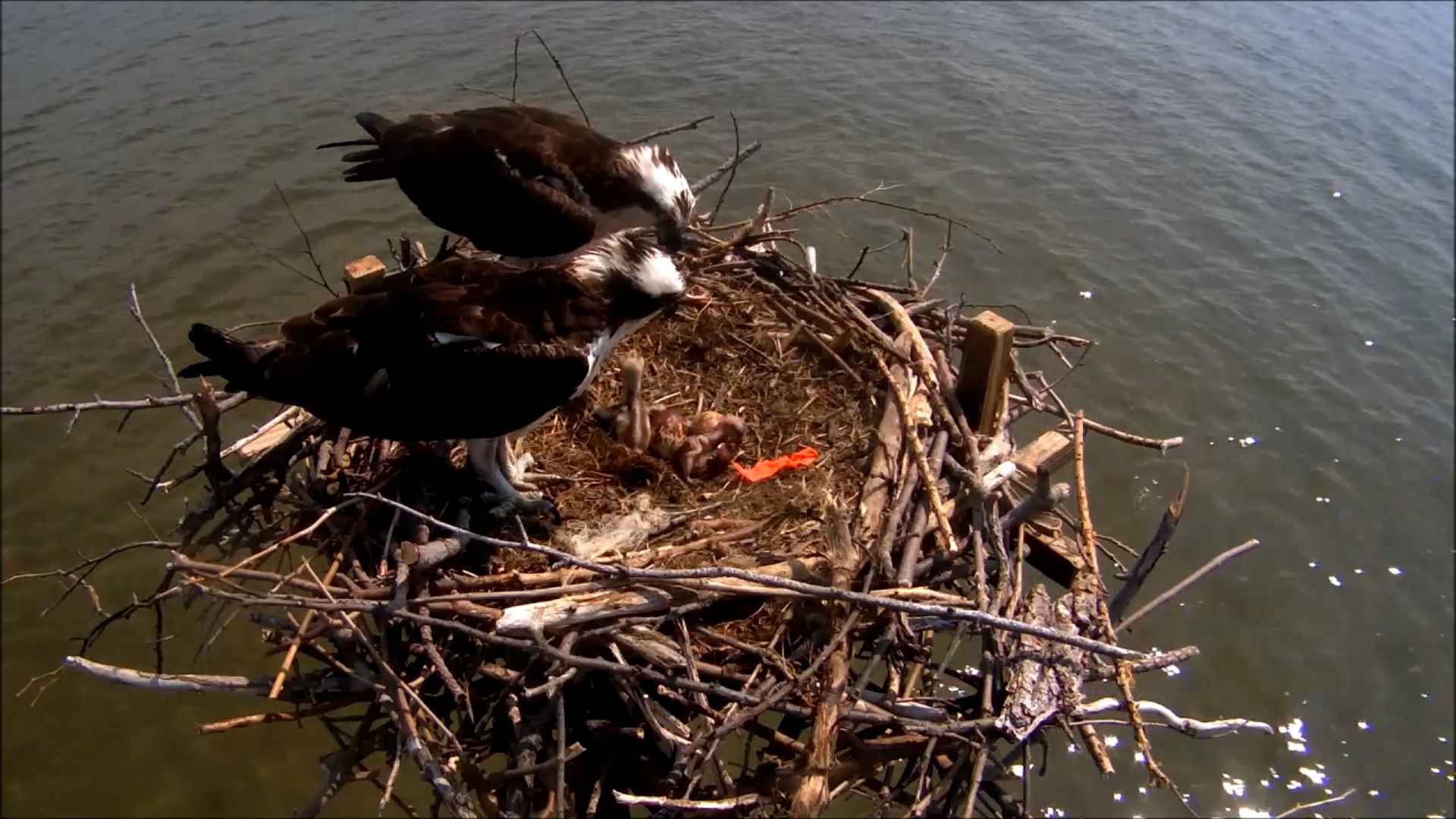
This work challenges us to protect and celebrate this bond so that future generations can know what it feels like to be entwined with nature, hearing the chirp of a baby osprey in its nest alongside our own melody creating a harmony in this beautiful symphony of solitude.
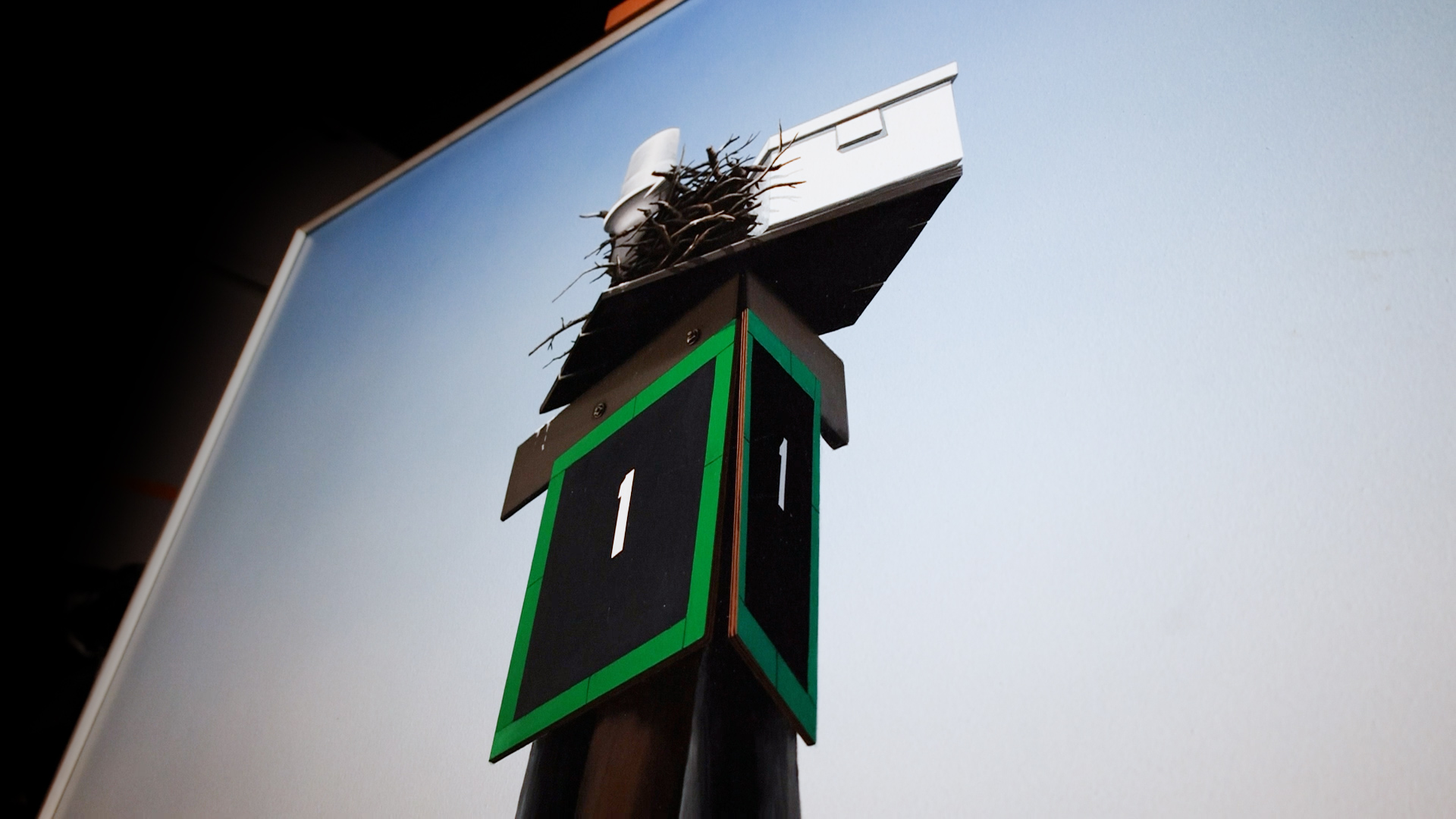
Be sure to watch the full episode here and stay tuned for new episodes the first Friday of each month!
